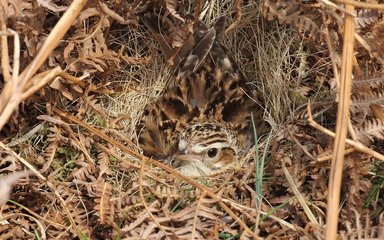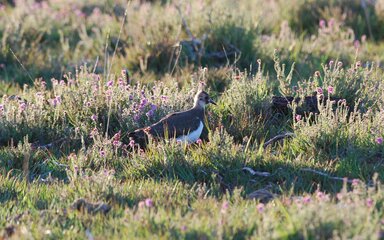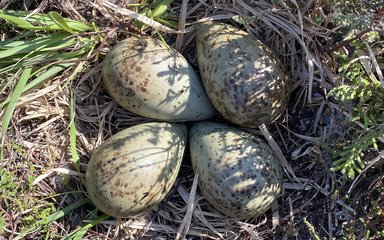Stay on track to help New Forest wildlife this spring
We are asking people to help rare ground nesting birds survive in the New Forest again this year by staying on the main tracks and keeping dogs with them here.
Special quiet zones will be set up at the most sensitive breeding locations with nearby car parks closed and signs in place to highlight the presence of the birds and help avoid disturbance as they attempt to breed and raise chicks.
The New Forest is a Special Protection Area for Birds. Under pressure in many parts of the UK, helping ground nesting birds breed successfully in the New Forest has a key role to play in their overall survival. Whilst the fortunes of some species of these rare birds have improved in recent years thanks to people’s support, others still remain under considerable pressure.
Unlike most birds, ground nesting birds build nests and raise their young on the ground around woodland edges and on the open heathland areas of the Forest. This makes it especially important to avoid startling parents causing them to flee their nests and leave eggs and chicks exposed to predators.
Car parks closed during the breeding season include: Clayhill, Crockford, Crockford Clump, Hincheslea, Hincheslea Moor, Ocknell Pond, and Ogdens.
Orange signs indicate areas very close to breeding grounds and can be seen in locations including car parks and on the main tracks. Red “stop” signs highlight nesting sites in the immediate vicinity and ask the public to avoid these areas.
People are asked to stick to the main gravel tracks and not to venture onto open, heathland areas where birds will be nesting. Dog walkers are asked to lend their support by keeping dogs with them on the tracks and where necessary using leads to keep them under close control.
We work with local organisations and volunteers, to survey the numbers of ground-nesting birds every five years to monitor their fortunes. During 2025 we've been looking at the Curlew breeding population and our team have been monitoring key ground nesting bird nests, carrying out targeted predator control and support ongoing research into these rare species.

Disturbance can result in nests being abandoned and chicks exposed to predators
Unlike most birds, ground nesting birds build nests and raise their young on the ground around woodland edges and on the open heathland areas of the Forest. Special quiet zones will be set up from March until late summer at critical breeding locations to help reduce the likelihood of disturbance resulting in nests being abandoned and chicks exposed to predators.
Lookout for our signs around sensitive locations
Everyone spending time on the Forest whether on foot, wheels or hooves can join the campaign by staying on the main tracks and looking out for special signage in the most sensitive locations. Orange signs indicate areas very close to breeding grounds and can be seen in locations including car parks and on the main tracks. Red “stop” signs highlight nesting sites in the immediate vicinity and ask the public to avoid these areas.


Car parks closed near nesting sites
A small number of car parks near nesting areas will be closed: Clayhill, Crockford, Crockford Clump, Hincheslea, Hincheslea Moor, Ocknell Pond, Ogdens, Shatterford, Yew Tree Heath and part of Beaulieu Heath car park.
A Special Protection Area for Birds
The New Forest is a Special Protection Area (SPA) for Birds and a critical breeding location for endangered ground nesting birds. Key species here include curlew, lapwing, around 15% of the UK’s visiting population of nightjar, and a third of the nation’s breeding population of Dartford warbler. Under pressure in many parts of the UK, helping them breed successfully in the New Forest has a key role to play in their overall survival.




